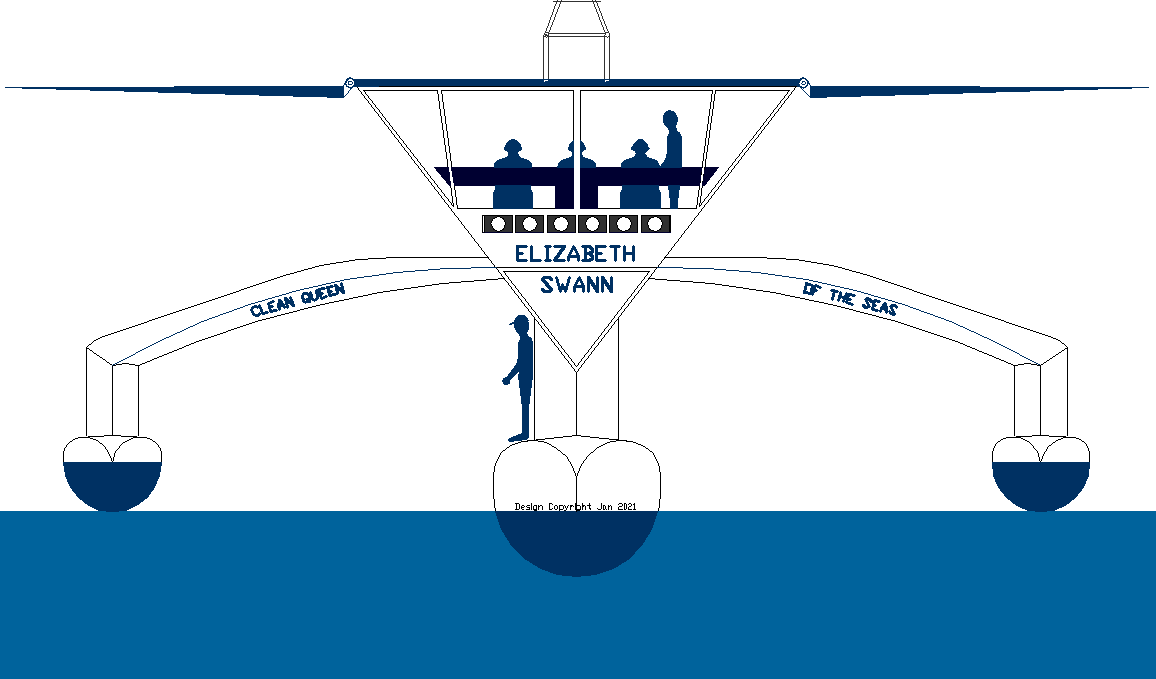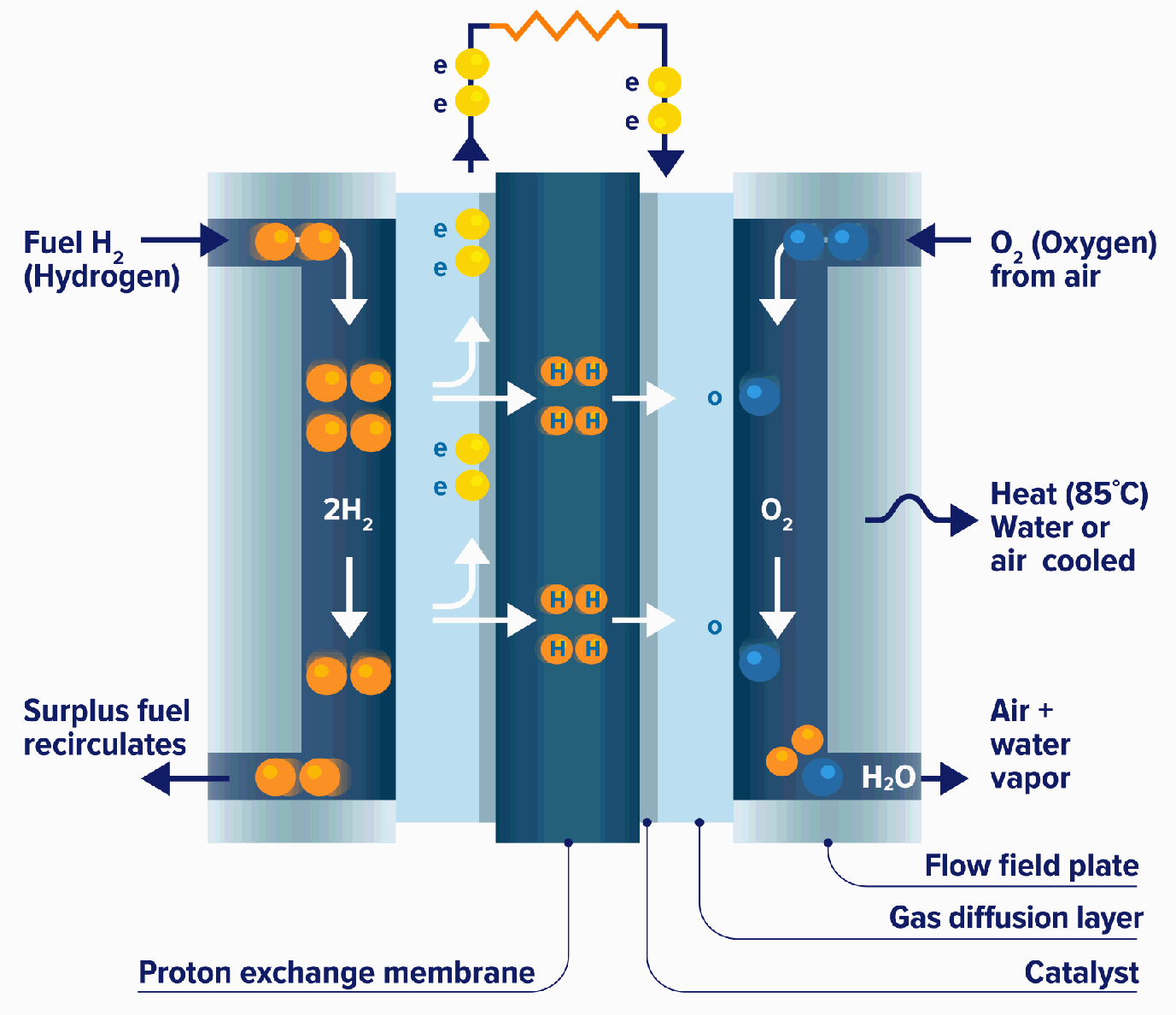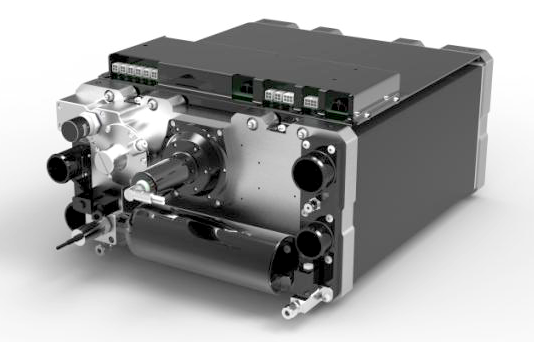|
FUEL CELLS
Please use our A-Z INDEX to navigate this site or return HOME
|
||||||||||||||||||||||||||||||||||||||||||||||||||||||||||||||||||||||||||||||||||||||||||||||||||||||||||||||||||||
|
NEW BOY ON THE BLOCK - In this CAD end elevation, it is possible to see how the simple trimaran hull design lends itself to experimental use of various fuel storage systems to supply the onboard fuel cells - in the quest for zero emission waterborne transport. But like all technical challenges, until somebody does it, the trophy remains up for grabs. Nobody has yet crossed a the major oceans at speed using fuel cells.
The Elizabeth Swann's design allows us considerable flexibility when it comes to incorporating fuel cells, as part of a hydrogen delivery system powering electric pod drives.
The development of fuel cells continues. At the present state of play, they are more than capable of providing the energy needed for the Swann to stage an attempt at the JVH2.
Where there is no bunkering for high pressure or liquid hydrogen on the proposed 80 day routes, we are examining the possibility of using other hydrogen carriers, to include ammonia and methanol.
A - Z INDEX OF HYDROGEN ORGANIZATIONS
A - Z INDEX OF FUEL CELL COMPANIES
...
..
All fuel cells have a similar configuration, an electrolyte and two electrodes, but there are different types of fuel cells based mainly on what electrolyte they use.
|
||||||||||||||||||||||||||||||||||||||||||||||||||||||||||||||||||||||||||||||||||||||||||||||||||||||||||||||||||||
|
ZEWT ALORS - The 'Elizabeth Swann' hull configuration is ideal for methanol storage tanks, offering ranges of up to 6,000nm.
|
||||||||||||||||||||||||||||||||||||||||||||||||||||||||||||||||||||||||||||||||||||||||||||||||||||||||||||||||||||
|
A central wave piercing hull stabilized by outriggers as a trimaran including:
a) Ultra light superstructure purposed designed to harvest energy from nature via b) and c) below,
b) Solar wings that track the sun and fold for storms, in concert with
c) A turbine generator on a mast that tracks wind conditions and furls for storms.
The theoretical displacement we are working towards is: 30,000 - 45,000 kilograms (target) in 5083 marine grade alloy.
LINKS & REFERENCE
http://
|
||||||||||||||||||||||||||||||||||||||||||||||||||||||||||||||||||||||||||||||||||||||||||||||||||||||||||||||||||||
|
Please use our A-Z INDEX to navigate this site or return HOME
This website is Copyright © 2022 Jameson Hunter Ltd
|



